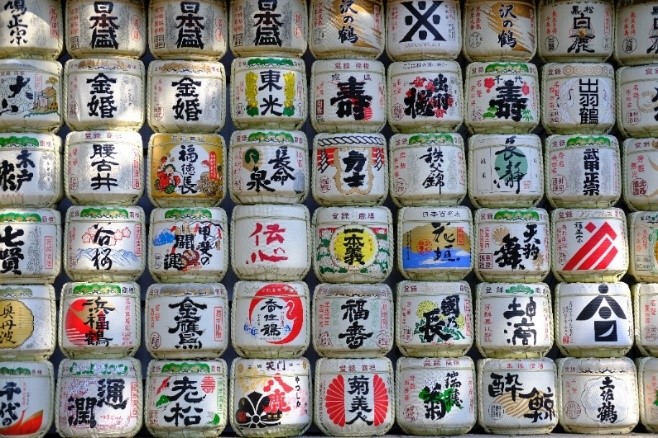
by Leo Lubba | Feb 22, 2023 | Green Tea
China is the world’s largest tea producer, generating $91.48 billion in yearly revenue and comprising 47% of the global market. Despite only ranking 20th in tea consumption, Chinese tea plays a significant role in cultural, social, and religious activities. Among many tea varieties produced in China, green tea is the most popular and oldest. Thirteen of the most popular green teas from China, including Chun Mee, Bi Lo Chun, and Da Fang, are described in the article, each having unique flavors and qualities determined by factors such as processing, location, and altitude of the tea tree’s growth.
China ranks as the 20th largest tea-consuming country in the world at 567 grams/1.25 lbs per consumer per year. In contrast, Turkey is the world’s largest tea consumer, with its citizens consuming 3.157 kg/6.96 lbs per person per year! Be that as it may, China’s teas dwarf the rest of the world in tea production, comprising nearly 3.18 million metric tons / 3.5 million tons every year and generating $91.48 billion in yearly revenues. That constitutes 47% of the global market.
Chinese tea consumption began in 2737 BC in Southwest China. As the legend goes, renowned herbalist Emperor Schen Nung, was on a journey crossing the country, and while in the mountains, he stopped to rest under a wild tea tree when one of the leaves fell into his boiling water and changed the color of the water (we now call “steeping”). The emperor was intrigued, so he decided to drink it; he found that it was to his liking. He later experimented with the new drink and found it medicinal. He later convinced the Chinese people to cultivate the plant throughout the country and became the Father of Chinese Tea.
Chinese tea is treated as the national drink and plays a significant role in cultural, social, and religious activities. China is famous for many types of teas, including Black Tea, Oolong, Yellow Tea, Red Tea, Pu’er tea, and various herbal drinks that include many for medicinal purposes. The one we will focus on is perhaps the most popular in China and certainly one of the oldest; Green Tea.
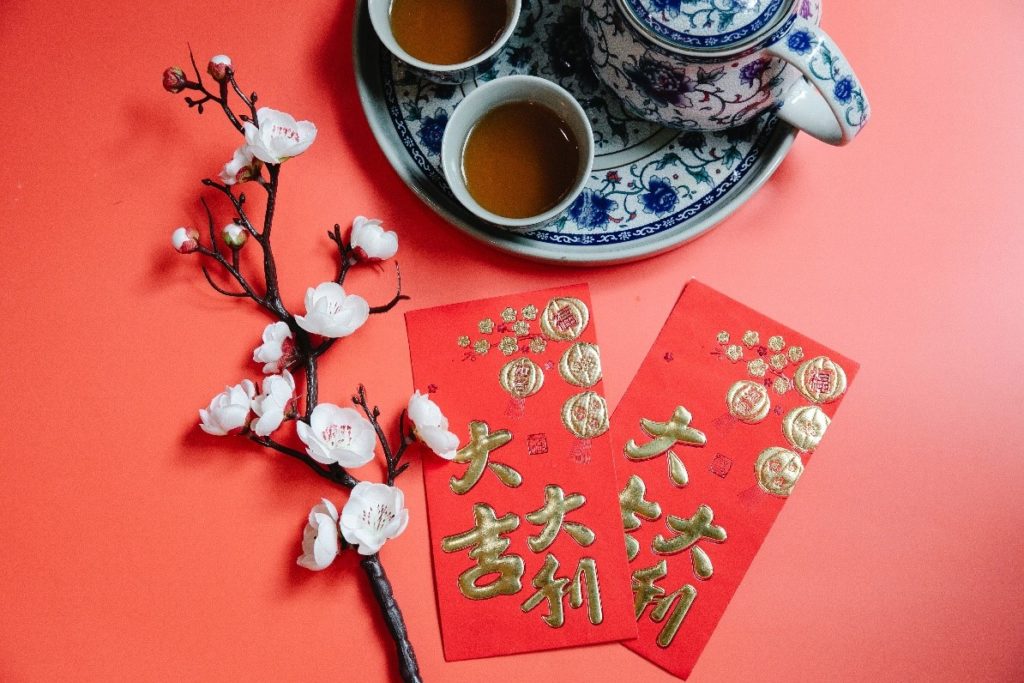
Enjoy a nice cup of Lubba Green Tea! Order here.
Even though all tea comes from the same plant genus, the Camellia Sinensis plant, tea processing renders many different results. For example, the difference between Chinese tea and Japanese green tea has to do with the process, both the growing process and the post-harvest process. Chinese Green Tea is pan-fried to stop oxidation, while Japanese Green Tea is steamed. Pan-fried produces roasted and nutty flavors. Steamed produce grassy, vegetal, and somewhat herbaceous flavors.
Also, the location and altitude of the tea tree’s growth have a verifiable taste difference. Different terrains, having different soils and native vegetation, will influence the flavor and taste. Tea grown at sea level will have a grassy, salty, oceanic, umami flavor compared to tea grown high in the mountains, which takes on malty, earthen, nutty, and sometimes sweet flavors.

List of the Top Chinese Tea Varieties
We will explore 13 Chinese green tea types and their backgrounds. This list is not exhaustive but is meant to explore the more popular green teas coming from China. So here they are, in no particular order.
1. Chun Mee
Chun Mee is sometimes called Zhen Mei, meaning “precious eyebrows.” Has a medium-bodied, bright yellow liquor and has the flavor of charred leeks. It is produced in the Zhejiang, Anhui, and Jiangxi Provinces. Has a “dusty” appearance and is generally more acidic and less sweet than other teas. Has several grades. Some examples are #41022 (highest quality), #4011, #9371, #8147 (mostly broken leaves and stems), #9367, #9366, #3008, or the least quality being called #3009.

2. Bi Lo Chun, or “Pi Lo Chun”
Bi Lo Chun translates to “green snail spring.” Grown in the Dong Ting Mountain region near Lake Tai (or Taihu Lake) in Suzhou, Jiangsu Province, China. The flavor profile is floral, nutty & fruity. Bi Lo Chun is divided into 7 grades according to quality level. They are Supreme, Supreme 1, Grade 1, Grade 2, Grade 3, Chao Qing 1, and Chao Qing 2.
Renowned for its delicate appearance, floral aroma, and taste is somewhat fruity. Bi Lo Chun also boasts showy white hairs at the time of harvest. Chinese tea experts hold this tea in very high regard. Ranked #1 green tea by Tea encyclopedia. Also grown in Zhejiang and Sichuan Provinces, but Bi Lo Chun deriving from the East mountain: Dong Shan, or the West Mountain-Xi Shan in Jiangsu Province is considered the best.
These mountains resemble islands, positioned nearly in the lake’s center. Even though they are considered mountains, the highest peak only reaches a maximum height of 200m/656ft above sea level. The taste of tea from these two areas is said to be more nutty than fruity and smooth, even though Bi Lo Chun is considered one of the strongest green teas in China.

Bi Lo Chun is also grown in northern Taiwan’s Sanxia District of New Taipei City.

3. Da Fang, or “Zhupu Da Fang,” or “Zhuye Da Fang”
Da Fang boasts a sweet and nutty flavor that some say has hints of corn and almonds. Grown at an altitude above 1000m/3300ft. Considered a top-tier tea by tea critics. Has sharp, flat shapes similar to Longjing. Some say it has been around longer than Longjing. It comes in two types based on drying technique: Zhong Huo, which features a nutty aroma, like chestnut, and Qing Huo, which has a more delicate taste.
Named after a Buddhist monk, “Ding Fu Da Fang” in the 13th Century, during the Song Dynasty (10th-13th centuries). It is produced near Lao Zhuling mountain and Fu Guanshan Mountain of She County, Anhui Province.

4. Huangshan Maofeng
Huangshan Maofeng is produced in the Southeastern interior of Anhui Province, near where Da Fang is grown and processed. 800m/2600ft. Has a characteristically light color with sweet vegetal notes and a smooth taste. Translates to “Yellow Mountain Fur Peak.” One of the most famous teas in China and can be found just about anywhere. It is a clean, needle-like tea with a slight floral overtone.
It is grown near Huangshan – Yellow Mountain, which is where wide famous varieties of Green Tea are grown. Has small white hairs that cover the leaves. The shape of the processed leaves resembles the peak of a mountain. Picked in the early spring before China’s Qingming festival.
Only the new tea buds and the leaf next to the bud are picked when picking the tea. Local tea farmers say that the leaves resemble orchid buds.

5. Longjing Tea, or “Dragon Well Tea”
“Xi hu Longjing” Ranked this tea second in Tea Cyclopedia. Pan-roasted teas form the area of Longjing Village in Hangzhou, Zhejiang Province. Produced mostly by hand and is renowned for its high quality. Considered very gentle and sweet.
This type of tea has a very high-water content amount and needs more water in the growing cycle than most other tea trees. Known as a common tea, it is consumed by “regular people.” Has six grades: Superior, 1, 2, 3, 4, 5. Granted the status of “Gong Cha,” or imperial tea, in the Qing Dynasty.
The Emperor of Qianlong, while visiting the Hu Gong Temple and drinking tea made from 18 tea trees in front of the temple, was so impressed by Longjing tea that he named these 18 tea bushes special imperial status. These trees are living to this day. The tea harvested from them sells for a price higher than its weight in gold. When stepped, it produces a yellow-green color.
There are five mountain peaks within Xihu (West Lake), all around 200m-300m in height. They ranked according to desirability with these monikers: Lion, Dragon, Cloud, Tiger & Plumb Flower.
6. Mengding Ganlu, or “Ganlu”
Mengding Ganlu is from Meng Mountain in the Sichuan Province, Southwest China. Grown at 900-1200m/2900-3900ft. Means “sweet dew of Mengding.” Aroma and flavoring of orchid and grass. Legend has it that a Toaist Master Wu Lizhen was the first to plant this tea varietal just before the Han Dynasty and during the Ganlu era and wrote about the medicinal qualities of teas from Meng Mountain, which said to “cure any illness.” For 1000 years (Tang to Qing Dynasty), this tea was chosen as a “Tribute Tea” for the emperor’s consumption. Now referred to as tea for the common people.
7. Tai Ping Hou Kui, or “Monkey Tea”
Tai Ping Hou Kui is renowned for its “two knives, one pole,” meant to describe two straight leaves clasping the enormous bud with white colored hairs. Flavoring description varies, but many describe an orchid aroma. The tea shoots can be as long as 15cm/5.9 inches! The leaves are deep green with red veins underneath.
Monkey tea is grown on the Western edge of the Huangshan Mountain, around 600-800m/2000-2600ft in the former Taiping Prefecture, Anhui Province, in a narrow geographical area surrounding three villages. They are Hou Keng, Yan Jia, and Hou Gan Villages. Tai Ping Hou Kui has been grown since the Ming Dynasty and harvested by Emperors.
Authentic Tai Ping Hou Kui must be produced using a specific cultivar called Shi Da Zhong, characterized by these long leaves and strong stems. Teas produced in the surrounding area are called by the same name, cost much less, but are not authentic. False alternatives are rampant.
8. Zhuyeqing, or “Bamboo Shoots”
Zhu Ye Qing tea has a floral aroma and sweet taste and is known for its light golden-green liquor color. Grown at 1500m/4900ft. Heavy fog is common in this growing region, contributing to this tea’s overall quality.
Discovered in 1964 by Foreign Minister General Chen Yi while on a military trip to the region of Mount Emei (one of four sacred Buddhist mountains in China) in the Sichuan Province. While visiting a monastery there, monks offered a unique type of tea to the general, to which he was impressed. He inquired about the name, but when locals said there wasn’t one given, he named it Zhuyeqing because of the resemblance of the leaves to bamboo shoots.
9. Hyson or “Lucky Dragon Tea”
Hyson translates to “flourishing spring.” It is a green tea that comes from the Anhui province of China. Made from young leaves that are thinly rolled to have the appearance of a long, twisted shape that unfurls when steeped. It has a full-bodied, if not pungent, taste that is golden in color. While this isn’t considered an emperor’s tea, the younger shoots are considered higher quality.
Hyson is probably derived from an Amoy (Southern Fujian Province) name meaning “flourishing spring tea” or possibly named after an English tea merchant named Phillip Hyson.
There are three gradations of Hyson: Mi Si, Cheng Si, and Fu Si. Often considered low-grade tea, the young leaves, in contrast, are considered high-quality.

Fun Fact: Hyson tea constituted 70 of the more than 300 chests of tea that were destroyed in the Boston Tea Party in 1773, and Ralph Waldo Emerson in 1847 referenced Hyson by writing: “By fate, not an option, frugal nature gave one scent to hyson and wall-flower, one sound to pine groves and waterfalls, one aspect to the desert and the lake.”
10. Anji Bai, or “Anji White”
These tea leaves are slender, bright green, and delicate looking and are accented with fine white hairs on the underside. The aroma hints at nutty and citrusy. Said to have hints of seaweed with a dry finish.
The liquor is a pale green. Produced in Anji County, Zhejiang Province, and Changxing County, Zhejiang Province. This tea cultivar was discovered in 1982 and is not widely planted. It has a short harvesting period. It is comparatively rare, so it is one of the most expensive teas in China.
11. Baimao Hou
Baimao Hou translates to “white-haired monkey.” The flavor profile denotes sweet and woody characteristics with peppery highlights. Made from the leaves and bud of the green tea leaves during the season’s first two weeks. The leaves have a rather heavy fur coat, making some say they look like monkey paws. Originates from the Taimu Mountains in Fujian Province, around 200m/650ft. It is often mistaken for white tea.
12. Lu’an Melon Seed, or “Lu’an Leaf,” or “Lu’an Guapian Tea”
This green tea produces a bright liquor with a light vegetal aroma. The herbaceous flavor has notes of spinach. Derives from Lu’an City in the Anhui Province at 800m/2600ft. A famous tea and very popular in China. The leaves, which are flat and oval, are said to resemble a melon seed. Uses the second leaf on the branch. It is a baked green tea that produces different flavors than others. Consumed since the Ming Dynasty.
13. Gunpowder, or “Pearl Tea”
Gunpowder tea can be either Green or Oolong. This type is rolled into small round pellets and resembles grains of “gunpowder.” Grown in the Zhejiang Province and Keelung, Taiwan. Tasting notes vary, depending on the location grown. Dates back to the Tang Dynasty. Tea leaves are withered, steamed, rolled, and then dried. Has several grades. 3505AAA is considered the highest grade, while 9375 is a relatively low grade.
When brewing green tea, boil fresh spring water and let cool to ~80 degrees Celsius/175 deg Fahrenheit, then steep for a minute and enjoy. Green tea can be re-infused a few times but requires longer steeping times e¬ach time.
The tea industry began in China, but it isn’t where it ends. We will explore teas from other parts of God’s green tea earth in other postings.

Enjoy a nice cup of Lubba Green Tea! Order here.

by Leo Lubba | Nov 21, 2022 | Green Tea
The article explores the green tea industry in Japan, highlighting the variety of green teas available and the unique growing and shading processes that are employed to create them. The thesis statement based on this content could be: The Japanese green tea industry offers a wide variety of green teas with unique flavors, grown using shading techniques that result in elevated levels of health-promoting compounds, making them a popular choice for health enthusiasts worldwide.
In 1785, William Cowper’s poem, The Task, stated, “Variety is the very spice of life, that gives it all its flavor.” If you want variety and flavor, check out the Green Teas listed here.
Among all the areas where Green Tea is grown, it is mainly concentrated in the Orient. While growing tea in the U.S is nearly non-existent, some countries have burgeoning tea industries, such as China, Taiwan, Japan, India, Bhutan, Thailand, South Korea, Kenya, Nepal & Sri Lanka. We will focus on green teas from Japan.
In the 8th century, Japanese Buddhist Monks brought “Brick Tea” back from their journeys to China. This was a form of compressed tea leaves molded into a brick shape. The Monks retrieved seeds from the tea bricks and planted them.
Camellia Sinensis, the plant from which all tea derives, began to take hold in the Japanese landscape. The Monks began drinking their harvested tea and incorporated it into their religious ceremonies.
Today, Japan has a variety of tea types to choose from, especially the Green Tea type. Some of these are listed below. And by the way, so does China.
Sencha:
This is the most frequently consumed green tea in Japan, accounting for two-thirds of tea production. Under this method, the tea plants are grown in direct sunlight, and in the beginning of May, the leaves are ready to be harvested. They are then quickly steamed to prevent the leaves from oxidizing, which maintains the green color.

The leaves are then rolled to release all of the juices entrapped in them. Finally, the leaves are dried, which results in a very basic but popular type of tea. The dried leaves themselves have the look of straight, pointy shards. The taste is described as vegetal, like seaweed or grass.

Fukamushi-Sencha:
Considered budget-friendly, this type has been steamed approximately twice as long as Sencha. Fukamushi, quite literally means “steamed a long time.” It is generally known to be steamed 2-3 times longer than normal Sencha.
Consequently, the tea is darker and has a stronger, richer taste, but the aroma is reduced. The longer steaming times result in leaves that tend to crumble during the factory process and agitation in the package.
This might sound undesirable, but it is actually an advantage to your health because you end up consuming more of the leaf surface as it dissolves in your teacup.

Kabusecha:
This type involves a unique growing process using shade for a relatively short period of time before harvest. Coverings, sometimes called “reed screens,” are put on or above the tea plants in the latter stages before harvest. In the case of Kabusecha, this is done for approximately one week (7 days) before harvesting. This blocks some or most of the sunlight from hitting the plant.
New shoots of tea leaves sprout from the branches without the relative aid of the sun, resulting in darker leaves with higher levels of Theanine, less astringency, and end up having a more full-bodied flavor.
SHADING: Tea farmers use these “reed” screens or “cloth” coverings to implement a shading process that results in certain desirable characteristics in the teas. This light-depriving process varies in the number of days that it is implemented, depending on what type of tea they are trying to achieve.
This results in different flavors and aromas for each tea type. Covering the plants from the sun in this way also causes a richer “umami” flavor with a less bitter taste.
Shading can be classified into three types; ceiling or “shelf” covering, simple “tunnel” shading, and “direct” covering. All of these types are implemented on a widespread basis in Japan.

FUN FACT: Umami is a 125-year-old Japanese term, used to describe a taste that is neither sweet, sour, salty or bitter.
Gyokuro:
The name Gyokuro translates as “Jewel Dew” or “Jade Dew”. It is a coveted tea in Japan, that is usually reserved for special occasions. It has a rich green color but unlike most Sencha, which is grown using the Yabukita cultivar, Gyokuro is crafted from a special variety of cultivars such as Ashai, Okumidori, Saemidori, or Tamakai.
The process of growing Gyokuro, again, involves shading with screen or cloth coverings, but for a longer period of time, which is normally 20 days. The effect is the same as for Kabusecha, but the extended period of shading results in an even richer flavor.
Also characteristic of this type of tea is an additional reduction in astringency, higher levels of caffeine and chlorophyll, and elevated levels of the catechin called Theanine which will leave you feeling energized and uplifted. Theanine has been credited with stimulating brain activity.
Tencha:
Similar to Gyokuro and Kabusecha, this process, again, involves covering the tea plants so they are deprived of sunlight. Only this method of light deprivation lasts more than 20 days, often a month. The twist with Tencha is that after steaming, the leaves are not rolled but dried only. The third important element is that the woodier parts of the tea leaf, such as the stalk and the leaf veins, are removed. What remains are the more delicate parts of the leaf, and they are called Tencha.
Matcha:
A method of using Tencha tea leaves and stone-grinding them to create a powder that is then mixed directly into water to make a wonderful drink that allows you to consume the entirety of the leaf (and all of the nutrients). Tencha tea is used because of the shade-growing characteristics that are desirable for Matcha and because of the de-stemmed leaves.
The stone grinding, while a fairly simple process, has been something tea growers look at as proprietary, and they tend to keep this process somewhat guarded. Some of these farms have been in business 100 years, and their methods of stone grinding go back 800 years or more. They prefer to keep their age-old methods to themselves.
The grinding mills are usually hand-constructed at the plantation. Plantations employ their own “matcha stone mill-grinder” and even special artisans who hand-cut new grinding stones when needed. These stones are cylindrical shaped with a pattern of opposing cut grooves on the flat surface.
Tencha leaves are fed into a hopper that slowly funnels them down through the center of the top stone, settling in between the narrow gap of it and the bottom stone.
The top stone spins slowly against the static bottom stone, whereby the tea leaves get ground down to a fine powder and spill out of the outer gap to a collection tray. The revolution of the stones is an important consideration as they need to be moving slowly and consistently to reduce friction so as not to burn away any of the coveted nutrients. The typical rate of 30 revolutions per minute results in a production of 25-30 grams of powder per hour.

There are two grades of Macha. Ceremonial and Culinary.
Ceremonial grade is the most coveted and is used for traditional Japanese tea ceremonies. You can buy this same type of Matcha, but the cost may be prohibitive for some folks. Culinary-grade Matcha is less exclusive but is intended for purposes other than ceremonies.
There are five sub-categories of culinary matcha:
• Classic Matcha: The most generally accepted type for use during cooking, making smoothies & baking.
• Kitchen Matcha: Similar to baker’s chocolate, this bitter powder is best as a lessor-component to making an extract, for example.
• Café Matcha: This concentrate is used in higher cooking temperatures. It is less powdery and is best for pastries.
• Premium Matcha: Similar to Ceremonial but less expensive. Coffee and tea shops will use this type to make your hot or cold Matcha drink and conceal its more bitter taste with sweeteners.
• Ingredient Matcha: Is a blend of young and old Matcha leaves. Makes a bolder and darker drink and is best when used in recipes that require thicker mixtures.
Genmaicha:
Meaning “Brown Rice” is a tea that incorporates, just that, brown rice. The rice is allowed to retain its bran jacket and is then roasted to the point of popping (some amounts of popping are inevitable and sometimes desirable).
It is then mixed with Sencha tea to create a unique flavor combination. Since the approximate mix of 50 percent Sencha and 50 percent rice, it has low caffeine content, which makes it suitable for those who don’t want or can’t have a caffeinated drink.

Hojicha:
Starts with Sencha leaves, which are then roasted in a pan up to temperatures of approximately 203° F, then cooled. The leaves will turn from green to a more brownish color. Through the process of roasting, caffeine is “sublimated,” which means changed from a solid state to a gaseous one.
This makes Hojicha tea not as bitter as Sencha, and the leaves have a distinct roasted aroma. This process forms a mostly mild green tea that might suit the widest variety of palettes as it has a very light taste and is easier on your gastrointestinal system.
The Japanese look at this type of tea to be more of a hydrating beverage and was invented to be consumed in between fresh harvestings.
Shincha:
Sometimes called “Ichibancha”, Is defined not by the process but timing. Shincha green tea, means “new leaves” involving the first harvest of the growing season, which lasts until May.
This is sometimes referred to as “first flush” or “in-season.” Later pickings are called Nibancha, then Sanbancha. Up to four flushes per year can be harvested during the growing season.
Shincha has a chemical makeup known to have higher amounts (some say 3x more) of the Theanine than Nibancha, which provide for a sweeter taste.
Nibancha and Sanbancha are a little more bitter and have elevated astringency.

Kukicha:
Pronounced “cookie-cha,” is made from the stems and stalks of the Gyokuro and Sencha leaves and is aptly named “Twig Tea,” derived from a desire to drink tea in the dormant season of growing.
This type has a unique aroma and flavor among most teas. Known to have a nutty, creamy, and sweet flavor profile and can be stepped for 4 infusions.
So, there you have it, a good number of choices in Green Tea alone, all from Japan. Which one suits your palette?

Don’t forget to order your Green Tea from Lubba Tea Co. by going on lubbatea.com
Be sure to say “I’d Lubba Tea!”

by Leo Lubba | Oct 10, 2022 | Green Tea
Thesis: Organic Green Tea provides numerous health benefits due to its abundance of antioxidants, amino acids, and catechins, such as EGCG, known to prevent several diseases. Organic Green Tea also has less caffeine and possesses L-Theanine, which provides protracted alertness without the sudden rush of energy and crash caused by coffee. The designation of Organic Green Tea requires strict adherence to USDA regulations, which promotes environmental sustainability and human health.
Aside from water, tea is the most popular drink in the world. Around 3 billion grams of tea are consumed annually.
Over 80% of US households have some form of tea in their cupboards. Green Tea accounts for around 15-20% of that. While black tea remains the most popular (78% worldwide), Green Tea is growing, and there’s a good reason. For one, it’s good for you, and two, it’s pretty good tasting.
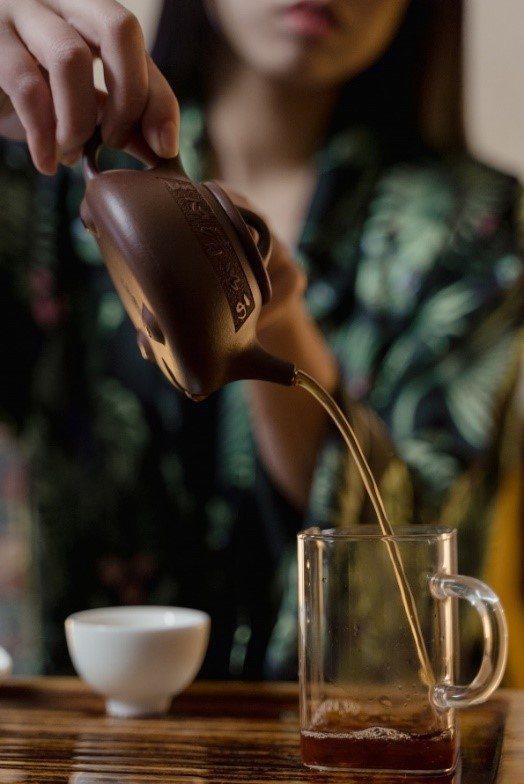
Below are some “good for you” reasons and possibly why tea is better than coffee!
Health Benefits
- Anti-oxidants. Green Tea is known for its many good qualities, from having an abundance of anti-oxidants, which lower bad cholesterol, improve heart and gut health, and prevent some cancers. Several studies show that polyphenolic compounds in tea reduce the risk of many diseases, so says a 1993 study conducted by Yang and Wang.
- L-Theanine. Green Tea also possesses the amino acid called L-Theanine, which can cross the blood-brain barrier. This is a rare compound almost exclusive to Green Tea. People use L-theanine to improve mental functions like curbing stress and helping with anxiety.
- Catechins. We can’t forget catechins. They belong to a subgroup of polyphenols called Flavinoids.
- EGCG. And then there’s that crazy EGCG, a catechin component. This plant compound primarily found in tea helps with inflammation, weight loss, and heart and brain diseases caused by free radicals.
The health governing bodies in the West don’t approve the health claims of tea like the Asian and European studies do, so you’ll have to try some and see for yourself. Be sure to let us know of the health benefits you get!
Coffee and Tea
Caffeine is a naturally occurring chemical found in the leaves, beans, and fruits of more than 60 plants, including coffee and tea. Coffee gets all the caffeine credit, but unlike coffee, the caffeine in tea is less quantified and affects you a little differently.
Caffeine Differences
While the caffeine content in an 8 oz cup of coffee is around 150 mg, there’s only 30-50 mg in a cup of Green Tea. Studies have shown that the L-Theanine (mentioned earlier) in green tea has a synergistic effect with caffeine, creating a better caffeine buzz that doesn’t cause a sudden rush of energy and subsequent crash like coffee. There’s more protracted alertness with tea.
Tea is a smooth and inviting drink, both hot and cold (my preference). People have known about green tea for millennia and have used it for hydration, medicinal use, entertainment purposes, temple ceremonies, and spiritual reasons. It seems to be a drink for all occasions.
Matcha Green Tea
One of the most popular green teas out there is Matcha. If you’ve never had matcha, it’s unlike any tea you’ve ever had. It is a bright green powder. This is because making Matcha involves using the whole leaf of the Camellia Sinensis plant.
Through an old-school technique of slow & steady stone-grinding, a very fine powder is created. This powder is mixed directly in water, which allows you to consume the entirety of the leaf. This way, you don’t miss out on the good stuff that tea provides. You don’t just steep the leaves and discard them when done.
There are varying grades of Matcha: “cooking,” “culinary,” and “ceremonial” grades. Expect to pay a good bit more for the ladder. Look for more interesting information on this type of tea in future blog posts from Lubba Tea.

Going Organic
So, what could make this miracle drink better? How about growing it organically? Yes, Organic Green Tea! It’s not just for the uppity class; regular folks demand it.
One would think that Organic Green Tea would involve merely the absence of chemicals in the growing process. Still, it’s a bit more complicated if you factor in what the official organic governing body wants.
USDA Approval
Having an Organic Green Tea designation, sanctioned by the United States Department of Agriculture (USDA), requires effort, and a lot of it, not just in the growing part. They establish strict rules in all aspects of the process…like paperwork and reporting. However, those with their in-house CPA, shouldn’t have to worry too much about that.
What To Look For
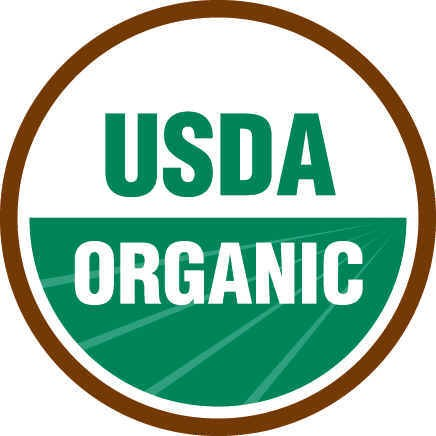
You can identify Organic Green Tea by spotting that little round, green USDA Organic certification label on the packaging (as in above). As mentioned, it means the grower of the tea has adhered to some pretty strict rules.
The Process
The process of becoming “organic” has its challenges. The actual designation, and the little green ball, is awarded to a grower who endures 5 specific requirements. Right off of the USDA’s website, they include:
- The farm or business adopts organic practices, selects a USDA-accredited certifying agent, and submits an application and fees to the certifying agent. (Which might seem like three steps to some, present company included).
- The certifying agent reviews the application to verify that practices comply with USDA organic regulations.
- An inspector conducts an on-site inspection of the applicant’s operation.
- The certifying agent reviews the application and the inspector’s report to determine if the applicant complies with the USDA organic regulations.
- The certifying agent issues the organic certificate.
Additional Steps To Throw In Here
I would add step 6: Wait three years before using such labeling until your land has worn off the prohibited non-organic substances the grower previously used on the farmland. The USDA said they could provide technical assistance during the transition, but I wouldn’t count on them coming over, hoe in hand.
And Step 7: Spend a lot on USDA Organic Green Tea fees. The USDA offers “financial assistance,” but it still doesn’t take the bite out of having to sacrifice a portion of your sales income, in perpetuity, to pay for a little green ball of acceptance. Not gonna lie; this process might exclude smaller tea growers because of the added expense and paperwork involved.
And step 8: Annual inspections of your tea farm to verify compliance require documentation of their processes at every step. As the USDA states on its website, “Organic [green tea] on-site inspections account for every component of the operation, including seed sources, soil conditions, crop health, weed and pest management, water systems, inputs, contamination and commingling risks and prevention, and record keeping.” Wow, I want to grow & sell good tea, but as the USDA states, “USDA organic products are verified organic at all steps between the farm and the store.”
Organic Green Tea farmers who endure can supply discerning tea-drinking customers with the satisfaction that they are consuming an officially designated Organic Green Tea farm.
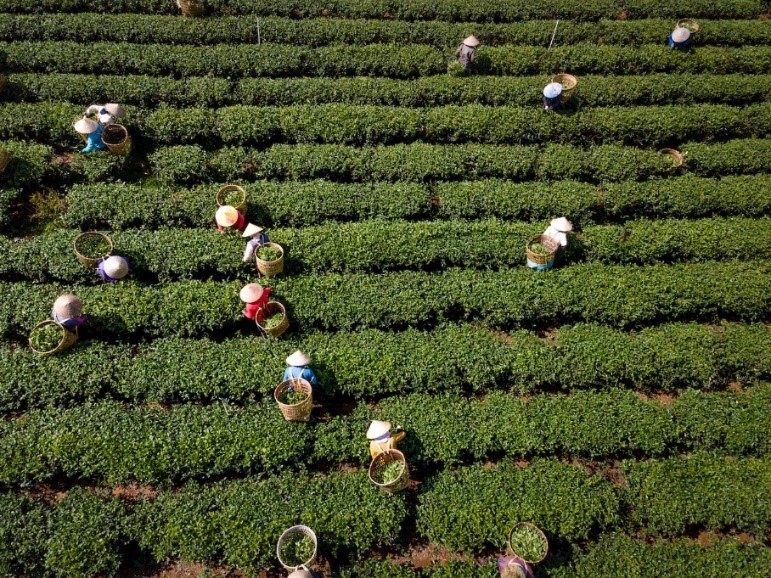
This is not to say that tea farms, which don’t sport organic certification, don’t supply very good, sustainable, and naturally grown tea. Because they do. There are growers worldwide who farm cleanly and responsibly who would otherwise qualify as organic but have chosen not to use the USDA labeling due to what they perceive as counterproductive results. Some, or perhaps many, cannot afford the expense or don’t have the resources to dedicate to the reporting aspects.
As of the time of this article, some of our best Oolong suppliers still can’t afford the extra expense of the little green ball, but they have met our stringent requirements.
The difference here is that USDA Certified Organic Green Tea growers have paid hefty dues to have government oversight added to their operations. They are big enough to dedicate staff to fulfill government requirements.
In Summary
In a perfect world, this designation adds value and is beneficial, but some say there are inherent problems with the organic certification process. First, even though growers are to supply documentation of intricate details of their farming process, such as watering intervals and tractor usage time, there’s no way to verify all of the steps. And if it can’t be done all the time, how can we be assured of quality every time? Secondly, consumers complain about the fact that GMO’s (genetically modified organisms) are allowed to be utilized in the process of attaining the “organic” designation. Thirdly, in an article from a paper of record, it has been said that “playing by the organic-certification rules was becoming an increasingly inorganic process.”
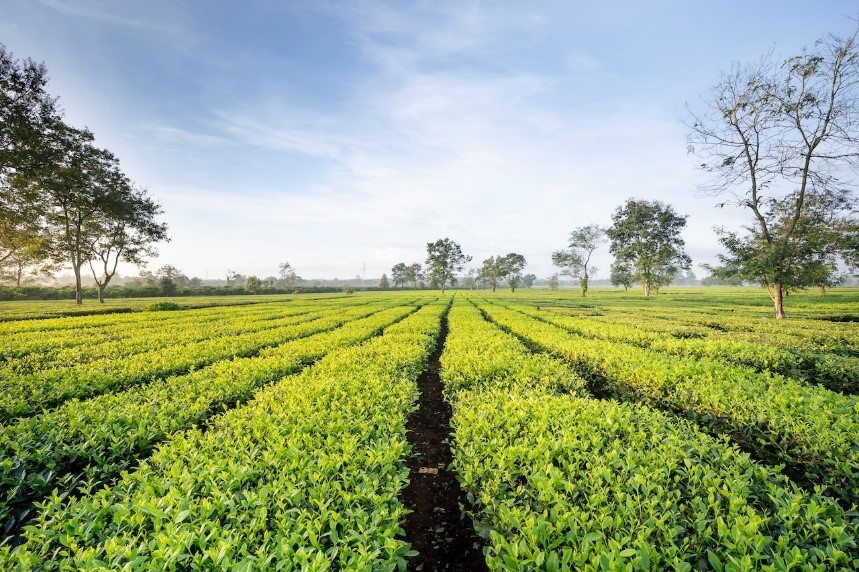
Having covered all that, if one’s tea is truly grown organically, with or without the little green ball, then we should be able to save the planet, achieve good health, attain culinary bliss, and bring on a much-needed chill vibe in a freshly brewed cup of Organic Green Tea.
Interested in a green tea history lesson? Check out our article on the Top 13 Tea Varieties in China.

by Leo Lubba | Jul 26, 2022 | Green Tea
Thesis: The article explores the history, processing, and unique characteristics of organic green tea, the second most popular drink in the world, behind water, and highlights how it comes from a rare variant of the ubiquitous Camellia Sinensis plant called Camellia Taliensis, which grows in different regions of the world and offers different flavoring characteristics based on the surrounding vegetation.
The Essence of Green Tea
Mom used to have a Camellia Flower Bush out by the front porch, it was quite beautiful during bloom time. Nice aroma too. The flowers would often end up in a vase in the center of the table. Once a month, the gardener would come along and sheer the bushes to a symmetrical square shape, and the clippings of the leaves & flowers would fall to the ground. He would summarily rake them up to be hauled to a dumping place. Seemed a shame to cut off the flowers, so pretty and all. Looking back, I should’ve lamented the loss of the leaves. While the flower steals the show, it is the leaves from the Camellia Sinensis plant that tea, all tea, is made from.
Green Tea History
Turns out that organic green tea has been around for a long time. Originally discovered in ancient China (~2000 B.C) in the Southwest of the country near the Himalayas, tea was consumed by the locals (and the Yin Dynasty) as a medicinal drink. It finally became known to Western civilizations during the 16th Century when traveling Portuguese priests interacted with Chinese merchants. The British loved tea so much that, during the 17th century, they decided to commercialize production in India to compete with the Chinese monopoly on the product.
Today, organic green tea is enjoyed by millions of people worldwide and is the second most popular drink behind water. We drink it for the health benefits, the taste, and for social & ceremonial reasons. People drink hot and cold tea (my personal preference), with milk or sweetener or maybe even with those strange little “bubbles” offered now. Stay tuned for “Lubba Bubble Tea”. Hey, that rolls off the tongue nicely.
Today’s organic green tea is grown in many parts of the world, providing the right combination of growing conditions. Much of the tea we drink comes from higher elevations like that of the Assam region in Northeastern India, the Darjeeling region near Nepal, the Yunnan Province in China, the Jambi Province in Indonesia, the Alishan High Mountains in Taiwan, and our case, the mountains around Chiang Mai of Thailand.

Organic green tea harvesting in the mountains around Chiang Mai of Thailand.
These higher-elevation teas have complex flavoring characteristics that pick up tones from the unique neighboring vegetation. As one might expect, different growing regions result in different tasting attributes. Some teas are grown at lower elevations, like Japanese teas, which have a grassy, ocean flavor described as “umami”.
Green Tea Processing
There are several levels of “processing” that the Camellia Sinensis leaves can go through to make your favorite tea. This process ranges from the production of White to Black tea and everything in between. The simplest of these is White Tea. In this type, only the first-emerging, bud-like leaves are picked very early in their life cycle. Doesn’t seem right to pick those immature leaves before they’ve gotten a chance at life, but this is the age-old process of creating White Tea. White Tea’s yield is very small compared to other tea types (which explains the higher cost). These young leaves are then withered slightly, steamed to lock in the color and prevent further oxidization, then dried. Upon drying, little white hairs emerge, hence the “White Tea” moniker. The leaves are kept out of sunlight to lock in the unique flavors of this type..aaaand they’re delicious!
The next type of tea happens to be the most popular drink in the world besides water itself, and that is Organic Green Tea, which is the focus of this blog post. It just so happens that Lubba Tea Co has lots of this stuff. Our Green Tea has a very simple path to your cup as well. It is picked from a US Certified, Organically Grown tea plant high in the mountains of Thailand. This is done when the leaves are mature, sometimes called first flush, second flush, etc. Then the leaves are taken to a US Certified Organic Factory that is so clean that you could eat off the floors. Tea specialists, dressed in bright, clean white suits, take the leaves and ever-so-slightly roll them (not on the floor) to optimize the flavor. The leaves then undergo a steaming process to deactivate oxidative enzymes, which maintain the green color. Our method of choice for steaming is the technique of pan-frying steaming. It’s been around a while.

From there, the leaves go into a warm dryer, then straight into a Lubba Teabag. The next step should be a road trip to your table or favorite easy chair. You will need a steeper for your cup, however, as our tea is all loose leaf. We wouldn’t want our tea leaves crammed into an uncomfortable little tea bag.
While I noted earlier that all tea comes from the Camellia Sinensis plant, our Green Tea comes from a rare variant of this ubiquitous tea plant. It’s a cousin if you will, and it’s called Camellia Taliensis, whereby the leaves are a little larger, and the taste is a little sweeter. Our supply comes from a combination of old tea trees, some 100 years or more, and relatively new trees planted to perpetuate this rare species.
We’ve noticed that the aroma of a freshly opened bag of Lubba Green Tea is almost as wonderful as the taste of the tea itself. It’s amazing that an unaltered tea leaf can smell so sweet, but what a joy it is to take in a whiff of a freshly opened tea bag. Other types of green tea don’t smell quite this good. We think tea should look, smell, and taste good. We like to positively affect as many of those sensory attributes as possible, and we’re still trying to figure out how to get it to hear well. No luck so far.
Green Tea is consumed all over the world. The countries that consume the most tea, in general, are Turkey, Ireland, Iran, and the UK. The US ranks 35th in consumption of this wonderful drink. We aim to change that by getting people sipping on a nice hot cup of our special brand.
Here’s a fact that not many people know about. The greener the tea, the more caffeine. So Black Tea has less caffeine than Green Tea. Many people are cautious about their caffeine intake, but so that you know, the caffeine in Green Tea is different than that of coffee. It doesn’t spike you up, give you the jitters, then crash you down. Instead, Green Tea caffeine ramps you up slower, makes you nice and alert, then glides you back down.
Benefits of Green Tea
Green Tea may be the healthiest beverage on the planet. It’s been used for good health for millennia. Today is no different. Studies around the world have shown that Green Tea can be beneficial to your health. Green Tea is loaded with antioxidants that have been shown to improve brain function, help with fat loss, protect against cancer, reduce inflammation, fight against diabetes, and lower the risk of heart disease. It’ll help you grow taller, too…ok, that one might be a stretch.
One of the reasons green tea is so beneficial is that it is full of Polyphenols, which are natural compounds found in some types of plant foods like fruits, herbs, vegetables, spices, dark chocolate, and, of course, tea. Polyphenols can act as antioxidants, neutralizing those pesky free radicals that cause damage to your cells that could result in health maladies. Naturally occurring Polyphenols in plants are much more effective than supplements containing the compound, so don’t even think about popping a polyphenol pill, knock back some of our Green Tea and call it good.
Other natural antioxidants are also found in Green Tea, like (big word alert) “epigallocatechin-3-gallate”. Hey, let’s call that EGCG. EGCGs are Catechins that help prevent cell damage and are the most powerful compound in Green Tea. They beat-up free radicals that cause you to age prematurely and cause a disease or two.
Another interesting fact is that Green Tea possesses something called “L-Theanine.” This is an amino acid that can cross the blood-brain barrier. Not sure what that is, but it sounds important, so I put it in. L-Theanine increases the activity of GABA, which has anti-anxiety effects. This one should sound pretty cool to brain surgeons out there, L-Theanine increases dopamine and the production of Alpha waves in the brain. ..Geez, that’s reason enough to start drinking Green Tea right there! And the combination of caffeine and L-Theanine can synergistically affect brain function. So imagine this, you’ve got this big exam to take, and you desperately need to be alert AND calm simultaneously. Well, you’ve got the perfect tool in Green Tea.
Drinking Green Tea

Now that your health is squared away, let’s work on your breath. It just so happens that the same Catechins mentioned before help your oral health. There’s no evidence yet that Green Tea kills the cavity-making bacterium streptococcus mutans, but there is evidence that it may reduce bad breath. So now you can have great breath while scoring that “A.” And it’s all because you enjoyed a nice cup of Lubba Green Tea.
Leo Lubba.
“I’d Lubba Tea”
The health statements above have not been verified by the Food and Drug Administration. Our products are not intended to diagnose, treat, cure, or prevent any disease. Consult with a physician if you are pregnant, nursing, taking medications, or have a medical condition and intend to consume any tea or tisane product.


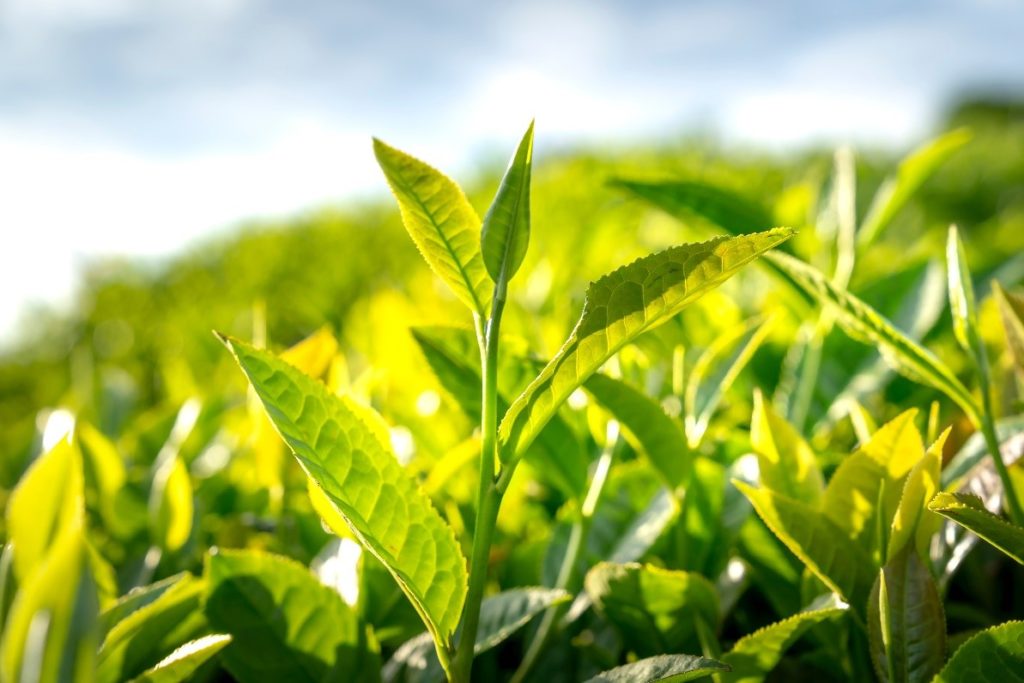
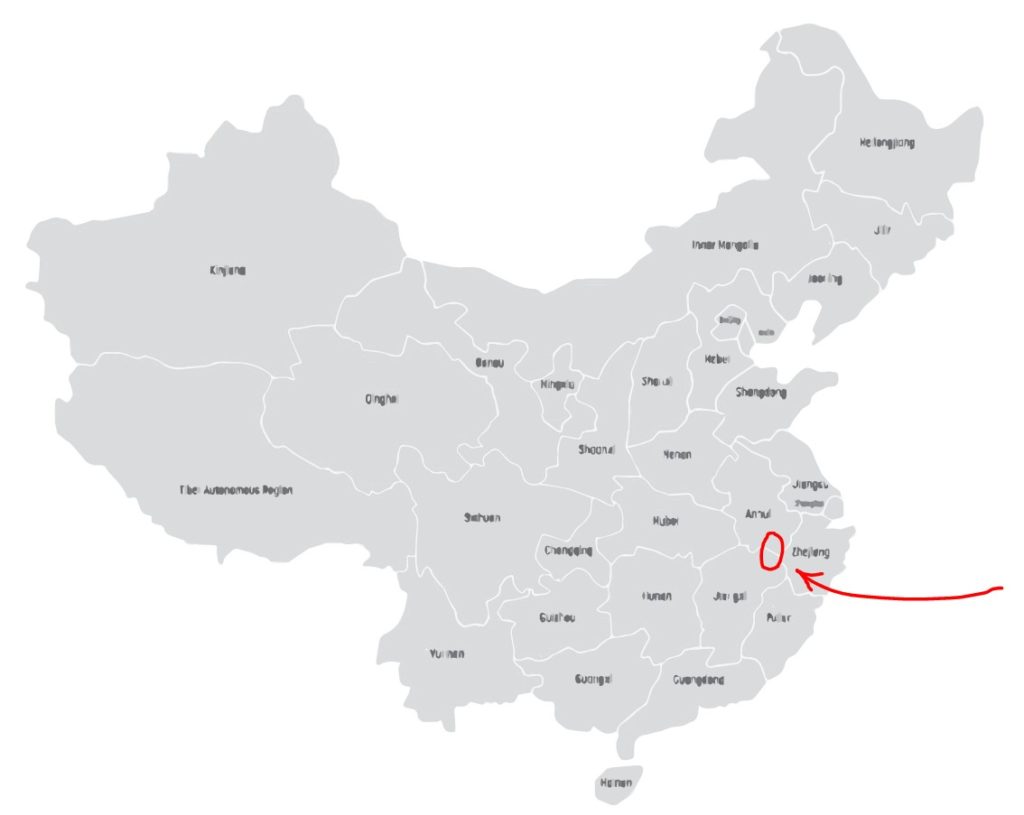
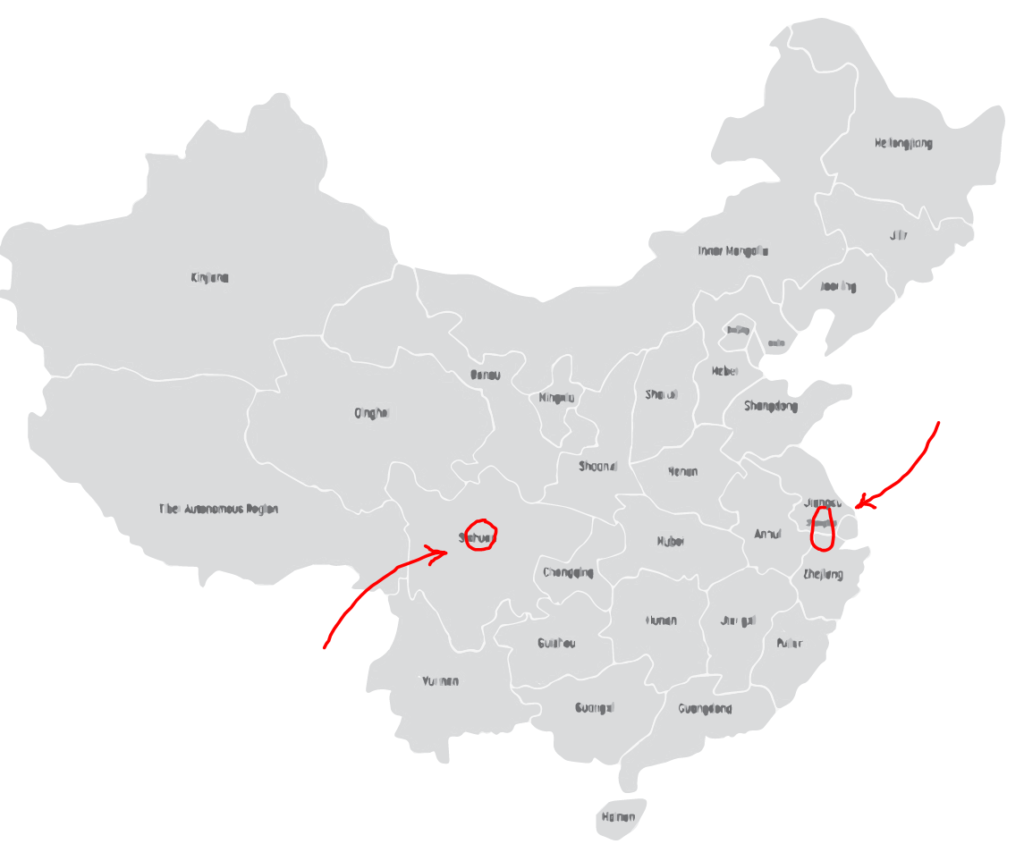

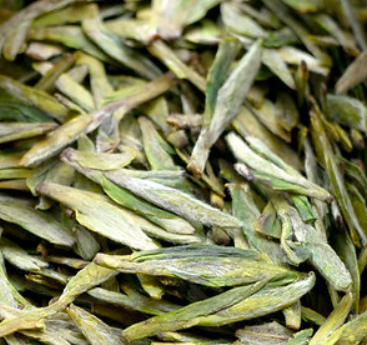

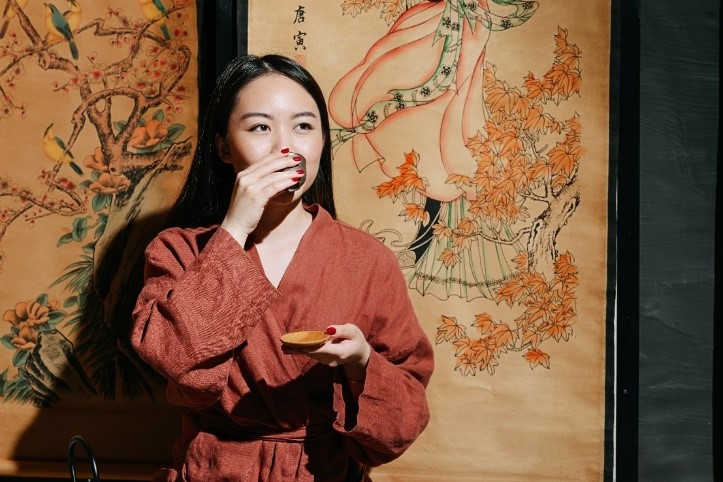


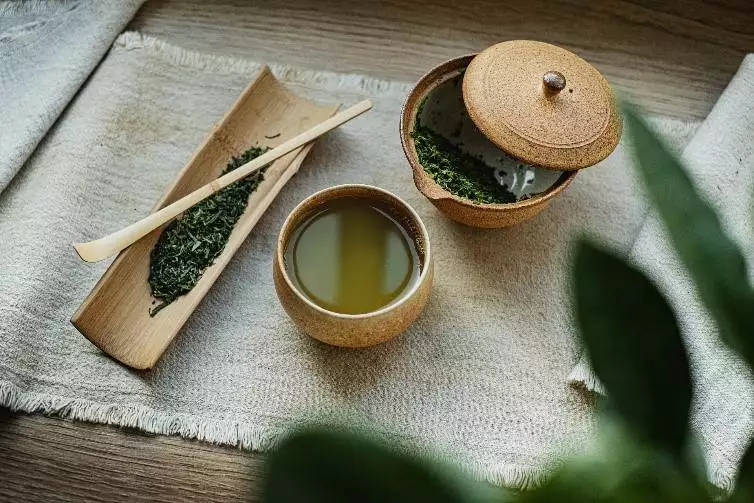
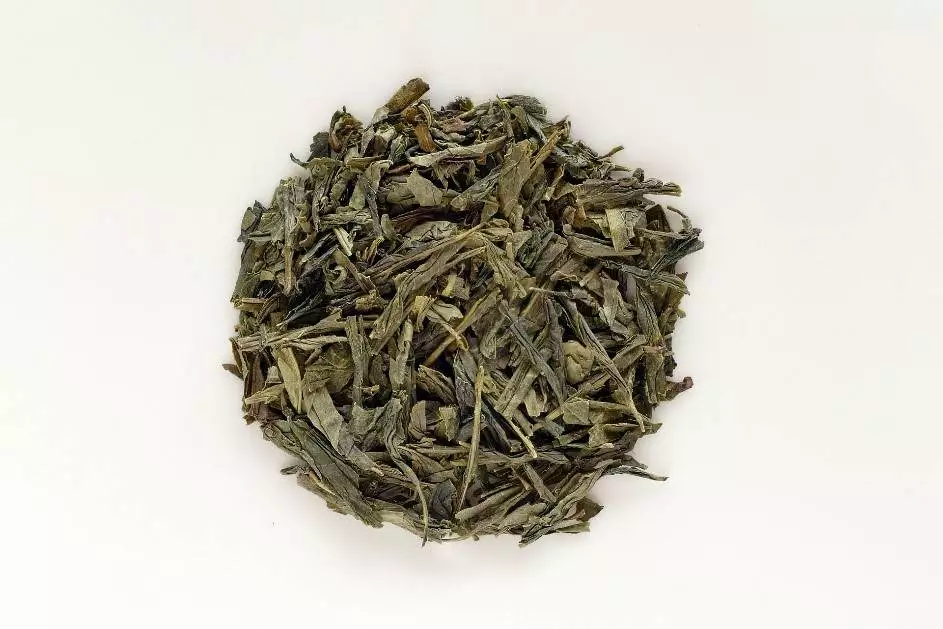






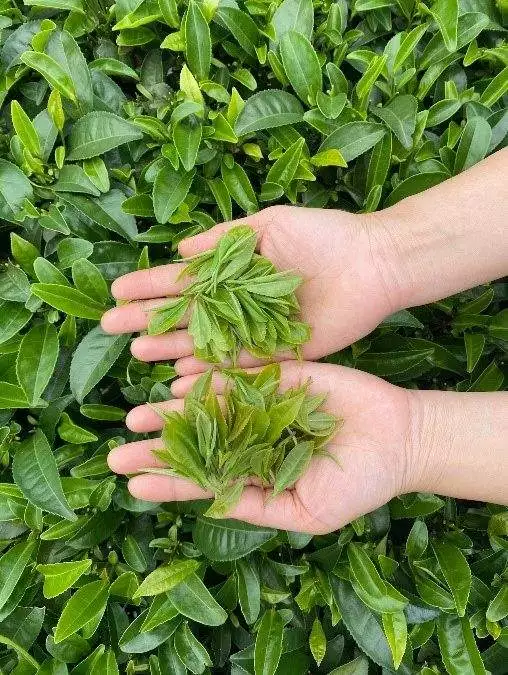





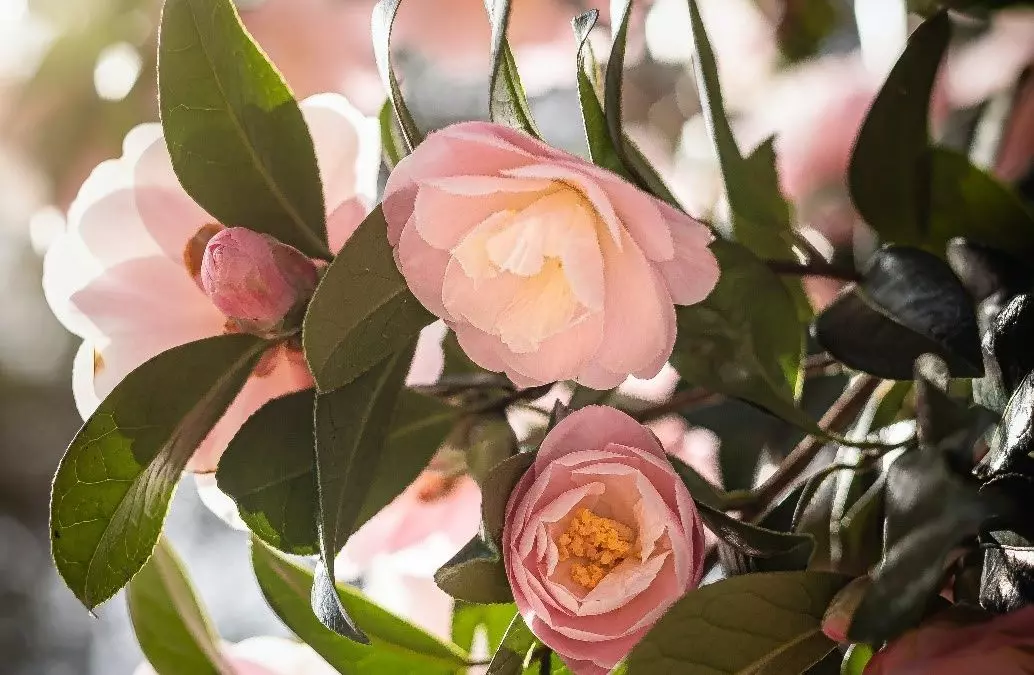
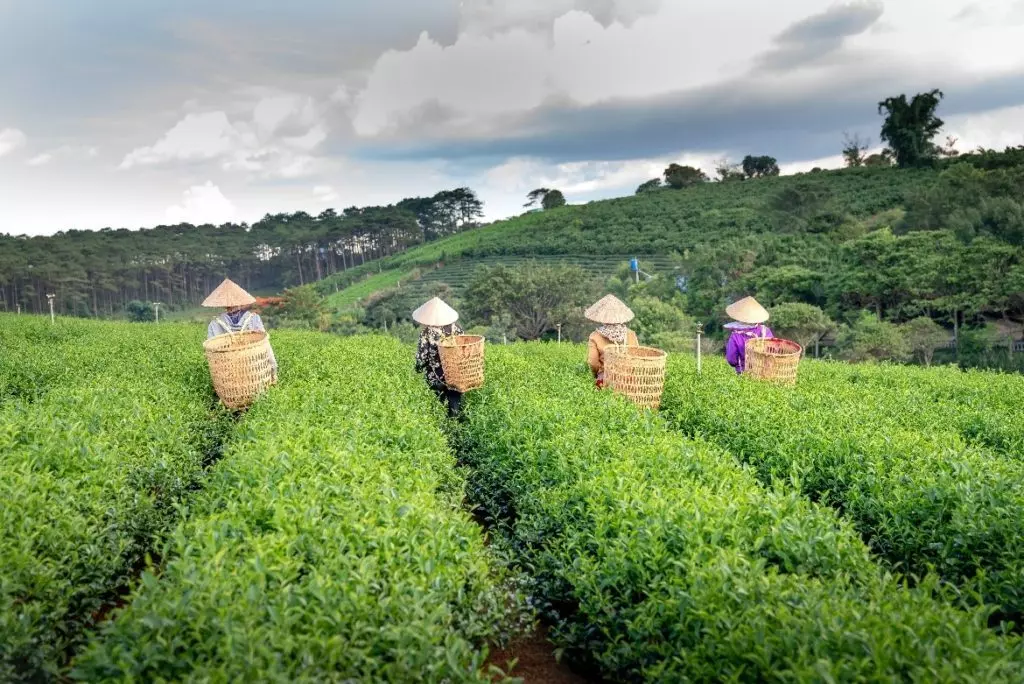


Recent Comments